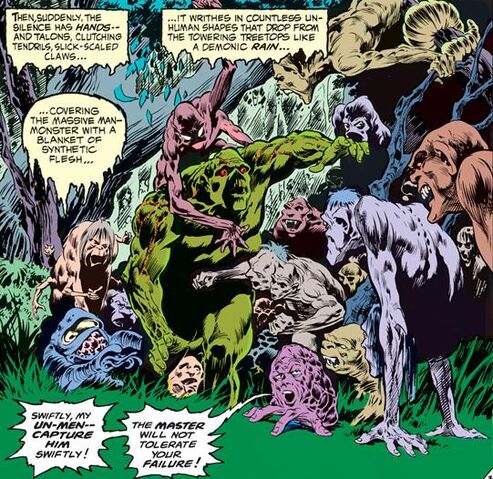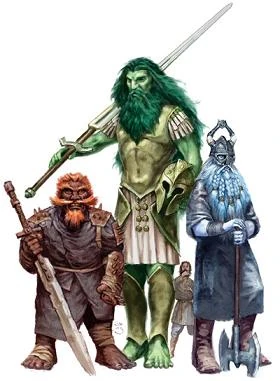This post was originally presented in October of 2010, part of a series on the Universal Monsters.
The gill-man and the werewolf. Both are zoanthropes, and perhaps as such, both represent fears of nature or man’s own animalistic side, though at that point the similarity seems to end.
The gill-man is elusive. His appearances in media are more rarified, no doubt due to his proprietary, rather than folklorish, origins. In addition to the
Creature trilogy, stand-ins make appearances in
The Monster Squad, and
Monsters vs. Aliens--where interestingly he’s grouped with decade-appropriate monster stand-in colleagues rather than the Universal monster old guard.
The proto-gill-men of Lovecraft’s "Shadow Over Innsmouth" have miscegenation fears in their DNA, which seem absent from Universal’s creature--unless his attraction to human females is a hint at this. In some ways, the Lovecraftian angst underlying the Deep Ones makes them more interesting than a fish King Kong. That’s part of the reason D&D’s Kuo-toa (more Deep One-ish in character) have always been more interesting to me than the other evil fishmen, the Sahuagin (Gill-Men).
I guess
Dr. Who's Sea Devils and Silurians might be mined for gill-man inspiration. Anything might help. Gill-man’s got a good look, but little else to give him real monster memorability.
Neil Gaiman has a short-story called “Only the End of the World Again” where
Larry Talbot, the Wolf Man, winds up in
Innsmouth and tangles with Deep One cultists. This may be as close as media has given us to a Gill-man-Werewolf bout.
Werewolves seem to have what it takes for urban fantasy fiction. Werewolf sex probably seems even naughtier, I suppose, than lovin’ the living dead. In fact--
Teen Wolf aside--there’s always been something a little “adult situations”--maybe even exploitation--about werewolves. They don’t just strangle like the mummy or Frankenstein, or give a killer kiss like a vampire--they rend and tear and chew. Werewolves are as much serial killer as wild beast.
Is it any wonder that werewolves are almost as likely as vampires to get the grindhouse treatment? I would suspect only “almost” because vampires maybe give more excuse for nudity, and blood effects are cheaper than wolf prosthetics. But the wolf man gets by, and whatever budget. Paul Naschy’s got a whole
series of werewolf movies where the werewolf's origin involves being bit by a Yeti, and he fights Templars--how’s that for game inspiration! Then we’ve got a werewolf biker film (
Werewolves on Wheels), a werewolf women in prison effort (
Werewolf in a Women’s Prison); and, if Rob Zombie had his way, a werewolf Nazi-ploitation film--
Werewolf Women of the S.S.
Werewolves: the most gameable of monsters, whatever your genre.










































